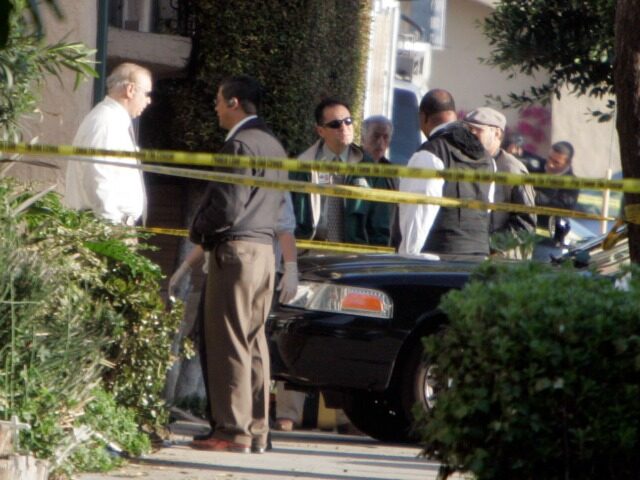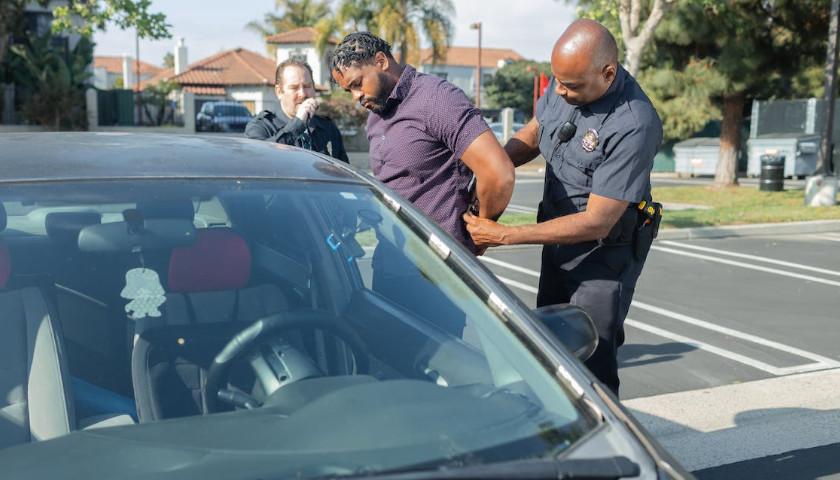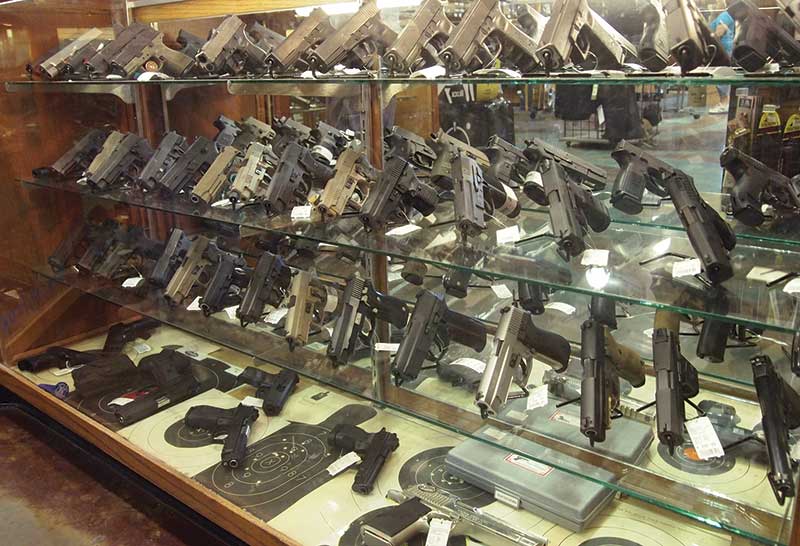Category: Cops
COLUMBUS, Ohio (WCMH) — The Columbus Division of Police is missing around 160,000 rounds of ammunition meant for their officers.
Columbus police said it was stolen from a warehouse on the west side earlier in April. When the division noticed the delivery was short, it contacted the shipping company — who said everything had shipped. The ammunition was stolen before making it to CPD’s facility.
The stolen ammunition was meant for rifles.
Two men involved in another warehouse theft in March are linked to this incident, according to Columbus police.
“The two individuals that have been charged have actually been charged with theft or receiving stolen property out of that initial warehouse that occurred the week prior to the theft of the ammo,” Deputy Chief Smith Weir said. “Those cases have been joined, and we are working collaboratively between the property, crimes bureau, and then some of our other units of detectives.”
32-year-old James Scaff and 36-year-old Christopher Kimmel are charged with theft, according to court records.
But Columbus police are still on the hunt for the missing ammunition, and asked anyone who might have seen it to call them right away — particularly if you have purchased 5.56 ammo in recent weeks.
“If you bought it from someone you know, if you saw it on social media marketplace, if you’ve gone to a gun show and you’ve seen it, we would just like you to let us know,” Weir said. “We track the lot numbers and try to find the ammunition, we will be interested to see where it turns out.”
CPD personnel was questioned, and the division said on their end, all procedures were followed.
—————————————————————————————- Sounds to me to be an inside job & good luck getting any of it back. Grumpy
As a young copper, I always felt sorry for my female colleagues, and not for the reasons you’re thinking. As rookies, we quickly learned the necessity of developing iron bladders, as we were always assigned the crappy details lasting for hours, such as directing traffic, maintaining crime scene lines and other lengthy details without proper facilities nearby. One of the best words of advice I ever received from my field training officer was “at the first inkling of having to go, do it if you can.”
Jeepers Keepers
The reason I commiserated so much with the female officers when it came to using the restroom had to do with belt keepers. Keepers are leather straps with two brass snaps used for securing your duty belt to your pants belt, keeping your duty belt from shifting while drawing your gun.
When finally getting the chance for relief the females had to remove at a minimum, four belt keepers, then their Sam Brown duty belt. Then undue their garrison belt, drop their britches, and finally get to the matter at hand, all while dancing a jig, depending on severity. As you can see, men have it a lot easier. We simply unzip, retrieve, expel, return, zip and we’re done. Mission accomplished! That’s not to say men don’t have their own problems.
Excuses, Excuses…
As the old joke goes, how can a man capable of hitting a running deer at 200 yards miss the toilet at less than three feet? The ensuing miss (mess) ends up anywhere (everywhere) due to a lot of extenuating circumstances. And not just for cops either. Here’s a few excuses, or explanations, on why men can miss a relatively easy shot. Curiously, many of these techniques mimic shooting habits at the range. So, there is relevance at hand here. Pay attention!
Spray & Pray
This technique is a definite no-no! While front sight, press is our mantra on the range, we have no front sight to speak of during relief time. Regardless, we have years of instinctive shooting going in our favor. Like throwing a ball, throwing your stream is purely instinctive. After engaging your target, adjust your aim and continue firing.
Your first shots usually go high, as high as the lifted lid, depending on load pressure. When you get near the end of your ammo supply, remember there’s usually a drop in velocity. Don’t be surprised when you transition from the veracity of a full-auto shooter to the drip, drip, drip of a single-action plinker. Adjust your aim as needed.
Pressure Problems?
The ensuing miss is usually attributed to pressure problems. Depending on the severity of the emergency, we never know what the velocity will be. Like cartridges, the higher the velocity, the further the range. This variable definitely affects aim. Severe high-pressure loads have a tendency to shoot high, while lower velocity loads go low. Adjustment is necessary, once POI (point of impact) is determined so a steady flow of bullseyes ensues. Remember, we’re shooting instinctively here, like a hipshot, so please ladies, give us a break.
Double Vision?
Believe it or not, sometimes there’s a double stream initially, until the muzzle corrects itself, transitioning back to a single field of fire. Controlling two fields of fire is much more difficult. Some are capable of pulling it off, but it is difficult indeed.
Polar Expression
Funny things happen to men in the cold. Things tend shrink. It’s an act of self-preservation of the species. Subconsciously, things are pulled closer to the body, keeping everything viable and warm. Herein lies the problem. There’s nothing worse being outdoors, usually while duck/goose hunting in the bitter cold and having 5 inches of layered clothing on with only now 3 inches of release valve.
It’s search and rescue in the worst way. Peeling back layer upon layer is a dire necessary. Forget about wearing gloves. They’re more hindrance than help. Although temporary, it’s a problem. Everyone knows it’s harder shooting with a snubby, especially when shooting around a lot of cover.
Reconsiderations?
Now I have a differing opinion on the matter of feeling sorry for the trials and tribulations women must go through while in police uniform. While I still feel sorry for them, I think they may indeed hold the eventual upper hand. Sitting is like shooting at the 3- yard line. Try doing it standing up, and women will have just as much, if not more problems as men.
Bigger Targets?
Lifting the lid provides a larger target. If you do make a rim shot, simply dropping the lid covers any peripheral hits. I’d usually avoid all these problems by simply pulling off in the high country somewhere and water the pines as they say. We had a fueling depot perfect for this method and by the bare spots behind the pines it was evident I wasn’t the only one to do so.
Beware of wind direction when using this method. It’s always better to be pissed off than pissed on.
Happy New Year! 2023 looks to be an interesting year indeed!
Crime in the Countryside
U.S. Reps. John Rutherford (R-Fla.) and Henry Cuellar (D-Texas.) introduced the Federal Firearms Licensee (FFL) Protection Act of 2023 (H.R. 2620) — a bipartisan bill aimed at strengthening and enhancing criminal penalties for thefts of firearms from federally licensed firearm retailers. Penalties would include minimum sentences of three years in prison for burglary and five years in prison for robbery.
According to the Bureau of Alcohol, Tobacco, Firearms and Explosives (ATF), between 2017 and 2021, there were over 2,254 burglaries and robberies of FFL dealers. Over 28,000 firearms were stolen during this period, many showing up at crime scenes.
The legislation is designed to send a strong message to the violent criminals engaging in these illicit activities, as well as provide for safer communities, assist law enforcement and protect the livelihoods of firearm retailers.
“During my career in law enforcement, I saw firsthand how FFL dealers were targeted by criminals. This legislation will ensure that those who rob and burglarize federally licensed gun dealers receive adequate punishment for their crimes,” said Congressman Rutherford.
The Federal Firearms Licensee Protection Act of 2023 has received support from the National Shooting Sports Foundation.
“This bipartisan legislation is what true gun safety looks like. Congress is sending a clear message that the safety of our communities is nonnegotiable and targeting firearm retailers to steal guns in order to commit further crimes is intolerable,” said Lawrence G. Keane, Senior Vice President and General Counsel for NSSF. “The firearm industry is grateful to Congressmen Rutherford and Cuellar for reaching across the aisle to provide those firearm retailers who follow the law the protection they deserve. This legislation assigns the responsibility for crime where it belongs — with the criminal. These are real solutions that make our communities safer.”
The Federal Firearms Licensee (FFL) Protection Act has been referred to the House Judiciary Committee.
From NE Austin (TX) — not to be confused with the City of Austin — comes this cheery news:
According to the Austin Police Department, at around 5:31 a.m., officers responded to a call in the 7600 block of Bethune Avenue, where a female resident reported a man attempting to break into her home through the door and a window. The caller then stated that the male suspect had entered the home, followed by the sound of gunshots.
Upon arrival at the scene, the APD officers and EMS medics found the male suspect dead. APD says the preliminary investigation indicates that the suspect was shot by one of the residents in self-defense.

The interesting part of the story to me is that the dead goblin is not, as one might think, a teenage choirboy, but a sixty-something asshole. Whatever. Asshole is asshole, regardless of age, and dead is dead. (Thankee, Reader Brad for the alert.)

A suspected catalytic converter thief was stabbed to death in a driveway early Friday morning in Los Angeles County, California, CBS News reported.
Los Angeles County sheriff’s deputies responded to a house in South El Monte on the 1100 block of Thienes Avenue at 2:37 a.m. and found a man dead at the scene, sheriff’s Lieutenant Michael Gomez said.
“Deputies made contact with the resident of the house, who said he had been sleeping when he heard people outside tampering with his car. He went outside to investigate, where he was confronted by three to four people. An altercation ensued and one man was fatally stabbed,” according to the report.
Investigators said two or three other suspects fled the scene and were last seen driving eastbound on Thienes Avenue. Gomez said tools left at the scene indicate the suspects were attempting to steal catalytic converters.
The deceased suspect, between 35 and 45 years old, was found lying partially underneath a car in the driveway. The weapon used is believed to be a kitchen knife, according to investigators.
Investigators detained and interviewed the resident. Two other people were allegedly inside the house at the time of the incident, officials said.
————————————————————————————— Two things about this comes to my feeble mind. In that Richard Ramirez the serial killer was caught messing with somebodies car. (Don’t ever mess with a car in LA as you WILL inherit the wind of some serious violence)
The other thing is that if the Cops won’t or cannot do their job. Then the neighborhood even here in wimpy LA will!

by Jeffrey H. Anderson
Abraham Lincoln described America as a nation “conceived in liberty, and dedicated to the proposition that all men are created equal.” Today’s Left portrays America as a nation conceived in slavery, and dedicated to the perpetuation of racial oppression. When CBS News’ Norah O’Donnell asked Joe Biden in the summer of 2020, “Do you believe there is ‘systemic racism’ in law enforcement,” Biden answered, “Absolutely. But it’s not just in law enforcement. It’s across the board. It’s in housing. It’s in education. It’s in everything we do.”
Such assertions of “systemic racism,” both in our police forces and in America writ large, are the topic of the latest issue of the American Main Street Initiative’s Quick Hits: “Are Cops ‘Systemically Racist’—and Is America?” Quick Hits are readable four-pagers, chock-full of key information on important issues of the day.
During the same summer Biden told America that its cops and its broader society are systemically racist, the Bureau of Justice Statistics—the statistical arm of the U.S. Department of Justice—undertook a meticulous examination of the demographics of those who commit crimes and those who are arrested for crimes. I was the director of BJS at the time, and this inquiry was led by Allen J. Beck, Ph.D., who was the top-ranked statistician at the bureau and had begun his tenure there during the Reagan Administration. Our aim was to see whether police disproportionately arrest alleged offenders of one racial group or another—that is, whether police appear to be biased against, or in favor of, any particular race.
The results of this inquiry were released in mid-January 2021 and are discussed in the newly released Quick Hits. BJS compared victims’ accounts of who committed crimes against them (rather than relying upon cops’ own reporting) with the arrest records of police. For serious nonfatal violent crimes reported to police, BJS found following:
- White people accounted for 41 percent of offenders and 39 percent of arrestees;
- Black people accounted for 43 percent of offenders and 36 percent of arrestees;
- Asians accounted for 2.5 percent of offenders and 1.5 percent of arrestees.
None of these differences between the percentage of offenders and the percentage of arrestees of a given race were statistically significant. (The findings are limited to nonfatal crimes for the simple reason that murder victims are unable to identify their assailants.)
In other words, the best available evidence suggests that, in terms racial demographics, cops are arresting those who actually commit the crimes. As the Quick Hits says, “Far from providing evidence of ‘systemic racism,’ such statistics provide evidence of systemic justice.”
The latest Quick Hits also highlights other illuminating statistics. For example, according to victims’ own accounts, a whopping 70 percent of violent incidents involving black victims also involved black perpetrators. BJS writes, “Among black victims, the percentage of violent incidents perceived to be committed by black offenders (70%) was 5.8 times higher than the representation of black persons in the population (12%).”
Despite such high rates of intraracial violent crime committed against black residents, however, black Americans on the whole are victimized by violent crime at rates similar to other Americans. To quote Quick Hits, “The reason for this is that there are comparatively few violent crimes committed by white (or Hispanic) residents against black residents.” Indeed, violent incidents involving black offenders and white victims were 5.3 times as likely as those involving white offenders and black victims—a huge disparity.
Again, all of these statistics are according to victims.
“Our history shows that America is a nation conceived in liberty, which fought for and won the freedom of the English colonists and later of the slaves,” the new Quick Hits concludes. “And while today’s race-obsessed Left seeks to re-instill a divisive race-consciousness, the evidence indicates that the actions of our police forces are consistent both with the hard-won colorblind ideal and with our founders’ dedication to the proposition that all men are created equal.”
—————————————————————————– It always strikes me funny on how no matter what. This GREAT Nation of ours always comes to the right way to do things. Which is why I love it so!!!!!!!!!!!!!Grumpy

Texas Ranger Joaquin Jackson died this past June 15. He was 80 years old. For almost 30 years he served the state as a Texas Ranger and you can read about is life in the two great books that he wrote, “One Ranger” and “One Ranger Returns.” Following his retirement, Joaquin ran an investigation & security company and also served for many years as a director of the NRA.
Ranger Jackson and I became friends back in the 1970’s when a North Texas car theft investigation took me to Jackson’s area of South Texas. After I moved to Southwest Texas and was elected a county sheriff, Jackson and I worked a number of cases together, including a manhunt in the canyons along the Pecos river for a man who had brutally murdered his girlfriend. Having spent a good deal of time with Joaquin Jackson, I can safely say that he married the only person that he was ever afraid of.
Like a lot of us, Ranger Jackson favored the 1911 pistol in .45 ACP caliber. His constant companion was a Colt Lightweight Commander with Mexican silver & gold stocks on it. In addition to that, he always had a Winchester Model 94 carbine, with an 18-inch barrel, close at hand. If things got really bad, Joaquin also had a Remington semi-automatic shotgun and a selective-fire M-14 in the trunk of his car.
What I really enjoyed about Joaquin Jackson was the fact that, for all of his adventures and dealings with criminals, he never lost his sense of humor. He loved life and you just naturally laughed a lot when you were around him.
He was also a very strong supporter of a citizen’s right to own firearms. We worked in an area that had, and still has, quite a number of gun owners. That never bothered Joaquin. He knew that those same gun owners were there to help us and all we ever had to do was to call on them. Later in life, he was led down the primrose path by a reporter and was hornswaggled into making statements that sounded like he didn’t think that citizens ought to own an AR-15. I can assure you that he did not truly feel that way and he learned a valuable lesson about talking to the press.
Joaquin Jackson was a friend, a family man, and a Texas Ranger. Above all, he was a Texas Ranger, the kind that the folks in our state are so proud of. Finally, he was my friend and I miss him.



